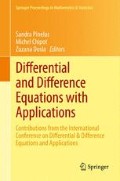Abstract
Writings describing the floating of objects on a liquid surface date from long prior to the starting year of the currently accepted calendar. About 350 bc Aristoteles described observations of objects that sink when fully submerged in water but which nevertheless can be made to float at the water surface. That is in striking contrast to the requirements for floating formulated by his countryman Archimedes during the following century, which specifically exclude such behavior. Two thousand years later the French physicist and priest Mariotte (1620–1684) observed and attempted [1] to explain the remarkable tendency of two floating balls either to attract or repel each other. In retrospect it cannot be surprising that the attempted explanations were at once incomplete and inconsistent; it is now generally accepted that such phenomena are closely linked with surface tension, the concept of which was initially introduced over half a century following Mariotte’s decease. And an adequate description could hardly be feasible without the Calculus, which may well not have been accessible to that thinker during his lifetime.
Access this chapter
Tax calculation will be finalised at checkout
Purchases are for personal use only
References
Mariotte, E.: Œuvres (Pierre Vander) Leyden (1717)
Laplace, P.S.: Traité de mécanique céleste, Œuvres complète, vol. 4, Supplément 1, livre X, pp. 771–777. Gauthier-Villars, Paris (1805). See also the annotated English translation by N. Bowditch 1839. Chelsea, New York, 1966
Laplace, P.S.: Traité de mécanique céleste, Œuvres complète, vol. 4, Supplément 2, Livre X, pp. 909–945. Gauthier-Villars, Paris (1806). See also the annotated English translation by N. Bowditch 1839. Chelsea, New York, 1966
McCuan, J.: A variational formula for floating bodies. Pacific J. Math. 231(1), 167–191 (2007)
Finn, R.: On Young’s Paradox, and the attractions of immersed parallel plates. Phys. Fluids 22, 017103 (2010)
Finn, R.: Equilibrium Capillary Surfaces. Grundlehren Series, vol. 284. Springer, New York (1986)
Finn, R.: The contact angle in capillarity. Phys. Fluids 18, 047102 (2006)
Bhatnagar, R., Finn, R.: Equilibrium configurations of an infinite cylinder in an unbounded fluid. Phys. Fluids 18, 047103 (2006)
Lunati, I.: Young’s law and the effects of interfacial energy on the pressure at the solid–fluid interface. Phys. Fluids 19, 118105 (2007)
Finn, R.: Comments related to my paper “The contact angle in capillarity”. Phys. Fluids 20, 107104 (2008)
Shikhmurzaev, Y.D., On Young’s (1805) Equation and Finn’s (2006) ‘counterexample’. Phys. Lett. A 372(2008), 704–707 (1805)
Finn, R., McCuan, J., Wente, H.C.: Thomas Young’s surface tension diagram: its history, legacy and irreconcilabilities. J. Math. Fluid Mech. 14(3), 445–453 (2012)
Finn, R., Hwang, J.-F.: On the comparison principle for capillary surfaces. J. Fac. Sci. Univ. Tokyo Sect. 1A Math 36(1), 131–134 (1989)
Acknowledgments
I am very much indebted to Paul Concus for the computer calculations and the detailed preparation leading to Fig. 7a, b. I wish to thank the Max-Planck-Institut für Mathematik in den Naturwissenschaften, in Leipzig, for its hospitality and for the excellent working conditions that have facilitated much of this work.
Author information
Authors and Affiliations
Corresponding author
Editor information
Editors and Affiliations
Rights and permissions
Copyright information
© 2013 Springer Science+Business Media New York
About this paper
Cite this paper
Finn, R. (2013). Capillary Forces on Partially Immersed Plates. In: Pinelas, S., Chipot, M., Dosla, Z. (eds) Differential and Difference Equations with Applications. Springer Proceedings in Mathematics & Statistics, vol 47. Springer, New York, NY. https://doi.org/10.1007/978-1-4614-7333-6_2
Download citation
DOI: https://doi.org/10.1007/978-1-4614-7333-6_2
Published:
Publisher Name: Springer, New York, NY
Print ISBN: 978-1-4614-7332-9
Online ISBN: 978-1-4614-7333-6
eBook Packages: Mathematics and StatisticsMathematics and Statistics (R0)

